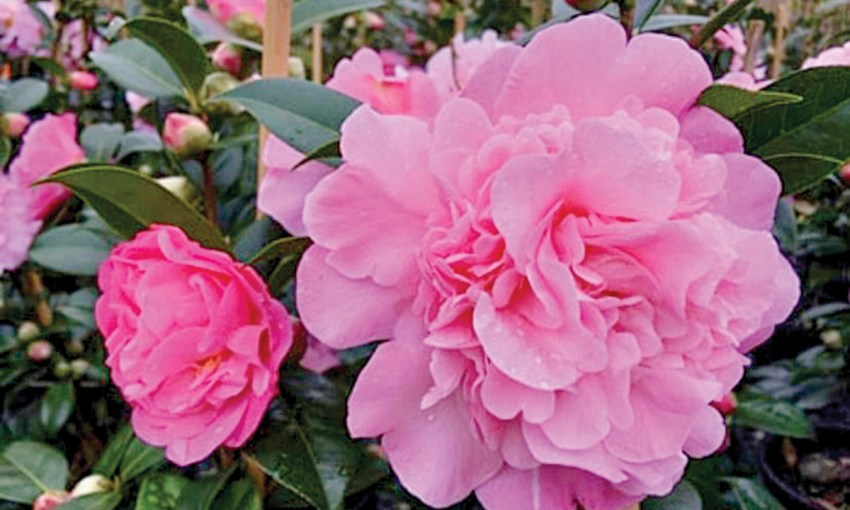The veritable queen of winter flowers, the camellia is adored by both professional and home gardeners. Here is the definitive camellia guide, with the new varieties to try, the ultimate show-stoppers to add to your camellia collection and all your questions answered.
The new and versatile world of camellias
There is no doubting that camellias are the queen of winter flowering plants. Native to Asia, there are more than 200 species of camellias and thousands of varieties. Having evolved and adapted to suit various climates over its time in evolution, to date the most popular varieties of camellias favoured by gardeners in South Australia have been japonicas, sasanquas and reticulatas. But there is now a range of recently released, early-flowering hybrid camellias hitting the market that have both professional and home gardeners excited.
They are known as Floribunda hybrids and are as bold as the japonica, as tough as the sasanqua and simply perfect for South Australian conditions, flowering in late autumn and throughout winter.
They are tolerant to both heat and frost but will require some protection from late afternoon sun.
This collection of camellias not only makes perfect garden specimens and dense bushy hedges, but also are ideal for pot culture.
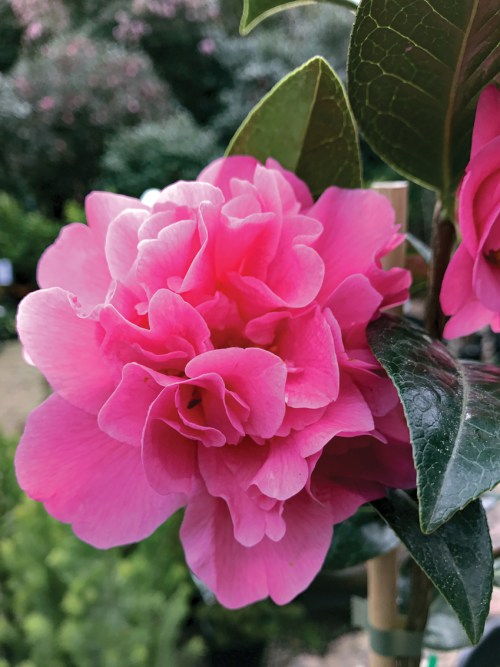
So here is a look at our favourites of the new Floribunda hybrids.
It’s Gorgeous Makes a perfect colourful small hedge or specimen plant. Produces masses of bright pink, fluffy blooms. The spent flowers fall off cleanly from the plant adding to its appeal as a feature with it also growing approximately two-to-three metres tall.
Illumination An upright, compact bushy plant up to two metres, it produces large, semi-double-to-loose informal double flowers that are a bright illuminating pink, just as the name suggests.
Moonshine Upright growth habit, producing abundant large soft pink blooms aging to near white. Perfect for hedging or a colourful screen and growing to approximately three metres tall.
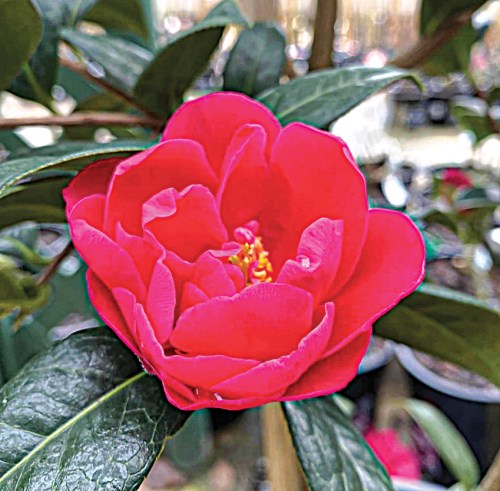
Pinktastic This variety is known for its fluorescent, bright pink, flamboyant flowers on a perfect upright bushy plant growing to about three metres. The large, luminescent blooms stand out against its deep green foliage.
But the new hybrid collection is not the only thing that has camellia-lovers excited this winter. Many gardeners are looking to add something new and interesting to their garden, with a special plant that makes a bold statement, adding to the diversity of their garden. So, here is a selection of wonderful plants that would be welcome additions to a camellia collection, or as a great conversation-starter.
Camellia japonica Unryu (also known as the zig-zag camellia) This contorted and twisted camellia originated in Japan; it has a curious distorted zig-zag branching pattern. The name Unyru name means “Dragon in the clouds”. With small, single deep-pink flowers, it makes an ideal bonsai subject or it will grow into a stunning feature plant and is highly sought after by collectors.
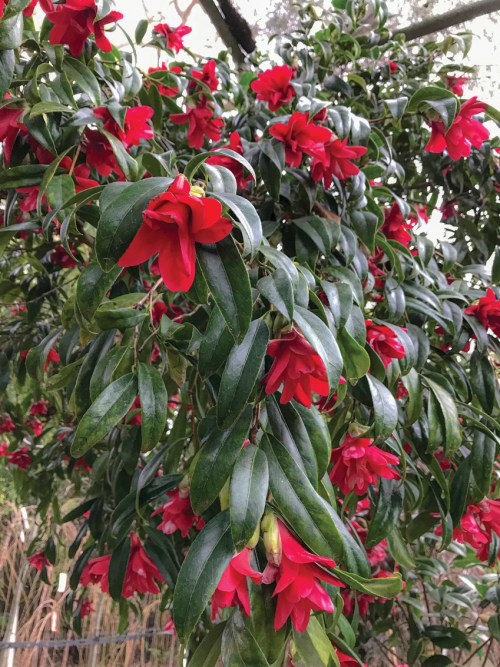
Camellia japonica Quercifolia (Kingyo Tsubaki-Fishtail) This novel plant is another famous Japanese camellia known for its unusual-shaped leaves, thus making this shrub a fantastic talking point for your garden thanks to its glossy, green foliage with split-lobed leaf tips, resembling that of a fishtail. (Kingyo Tsubaki in Japanese translates to “Goldfish Camellia”.) Quercifolia is a vigorous, upright, evergreen shrub with simple, single, seven-petalled coral pink blooms with a column of yellow stamens in the centre.
Flowering from late winter into spring it is suitable for pot culture or as a stand-alone garden feature.
Camellia japonica Hakuhan Kujaku
This interesting Japanese name translates to “White Spotted Peacock”, and the variety is another collectable for your garden. This beautiful, evergreen shrub has glossy, long, narrow, green leaves, producing masses of small bell-shaped, semi-double red flowers with white blotches. It has an interesting pendulous growth habit suited to cascading over the edge of a pot or retaining wall or it can be trained to be a stunning weeping standard specimen. Hakuhan Kujaku is a unique camellia suiting many applications and a perfect addition to a Japanese-inspired garden.
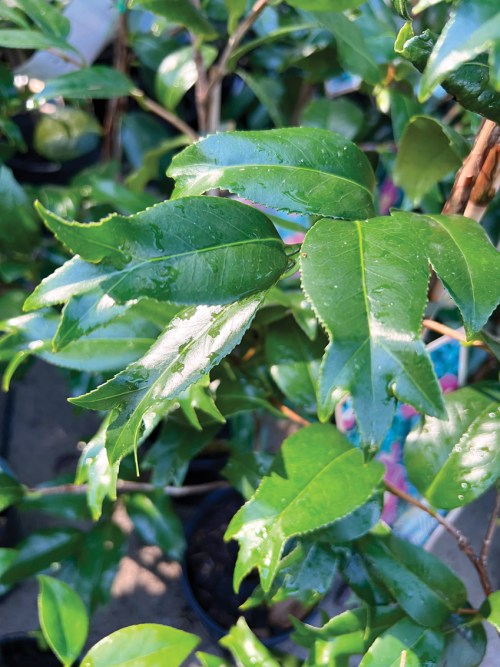
When it comes to caring for camellias, here is the ultimate question-and-answers guide: How often should I water my camellias?
How often you water your camellia varies between plants in containers and plants in the garden. Generally, camellias in containers enjoy one or two deep soakings a week, but obviously this will vary depending on how exposed to the elements the plant is. It is all about how quickly your soil dries out; keep an eye on the soil surface, apply a deep watering when it starts to appear dry. For example, a freshly potted camellia will stay moist longer than one that is well-established. Once established, camellias are low water use plants especially where mulch is used.
What are their soil requirements?
Camellias prefer a soil rich in well-composted organic matter, described as an acid soil, ideally with a pH of 5.5 to 6.5. An acidic potting soil can be purchased in bags from your local garden centre. Quality potting soil is designed to drain freely and this is essential for a healthy root system.
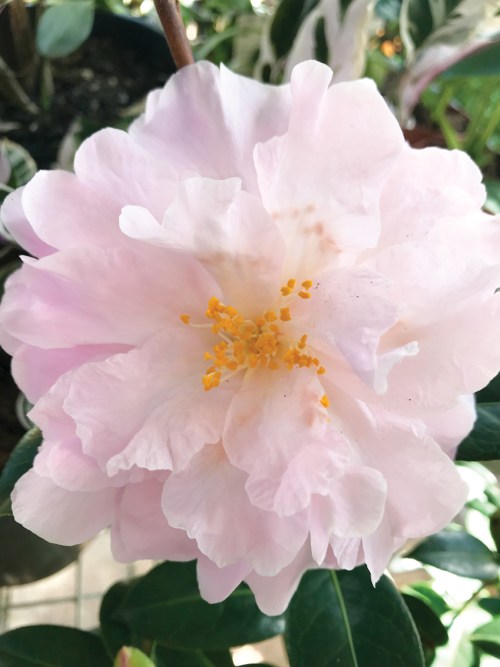
Should I mulch my camellias?
Mulch your camellias throughout the year. Pulverised pine bark, aged animal manure, well-composted leaves and lawn clippings are all useful. There are also many brands of quality, bagged mulching products available. Avoid letting this material build up around the trunk of the plant as collar rot can occur. Mulching conserves moisture, suppresses weeds, keeps soil temperature down and contributes to nutrient levels.
Can I prune my camellias?
Camellias are tidy growers, however, when necessary, they love to be pruned. If you are cutting flowers to display, pruning will help retain a dense compact shape. When your camellia has become too tall, pruning the top-growing branches back to a side branch, will help stimulate growth lower down. Pruning helps shape and stimulate vigour and is best done immediately after flowering, usually mid- to late-September.
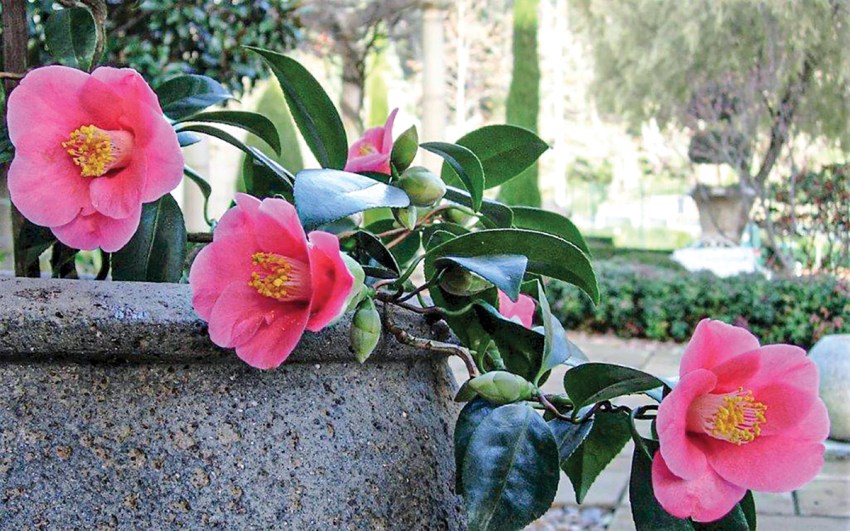
When do I fertilise my camellias?
Use of a well-balanced camellia fertiliser will help to achieve optimum growth, an abundance of quality flowers and keep your camellias in good health.
For camellias grown in the ground, use an organic-based camellia fertiliser, which is best applied once through autumn, winter, spring and summer.
For pots, a camellia-specific, slow-release fertiliser is best. They are easy to use and economical. Apply slow-release fertiliser either every six months in late winter and again in late summer, or once a year depending on the brand. Slow-release fertilisers work best when covered with soil. As with all fertilisers, follow the instructions on the packet and water in well after applying.
This article first appeared in the Winter 2023 issue of SALIFE Gardens & Outdoor Living magazine.



